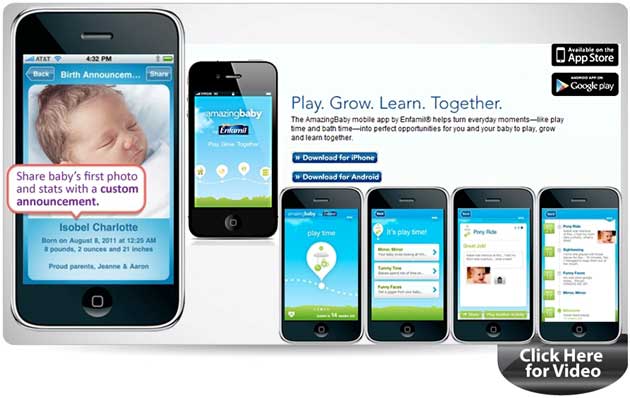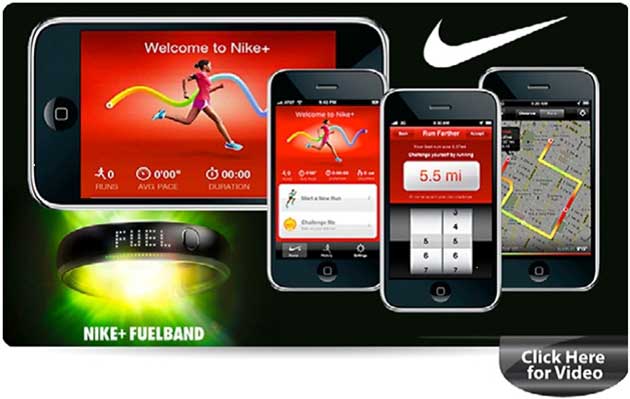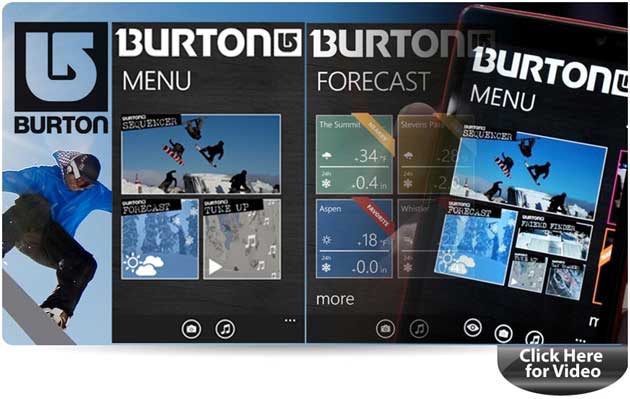Through the course of this six-part series on mobile innovation, I have explored the incredible innovation moment that mobile provides today's marketers, and illustrated a set of strategies—ranging from innovating brand engagement and sales channels, to innovating product offerings and customer experiences.
Which brings me to the sixth segment—and the final innovation strategy that will close this series: innovating value propositions through mobile.
Value propositions are the heart, soul, and epicenter of a business, because they reflect an organization's market positioning while communicating the core promises that companies make to their customers. In the hierarchy of marketing, value propositions reign supreme: where tactics are foot soldiers and strategies are generals, value propositions are high priestesses. And though value propositions themselves are conceptual, their byproducts are not—as all products, services, strategies, and tactics work in concert to support and deliver on each company's value proposition.
And we marketers take our value propositions very seriously, laboring intensely over their creation, fighting fiercely to ensure all products and programs support them, and working tirelessly to make sure they evolve to ensure their ongoing relevance.
Though a company commits to living by the philosophy set forth in its value proposition, that proposition is not forever set in stone. Rather, value propositions need to be revisited and revamped when developments, changes, and shifts occur—as when a company is seeking to reposition itself within a new industry, promote a new line of products and services, or sell to a different set of target markets.
But through mobile's capabilities and tools—and herein lies the innovation—marketers are able to move their brands into bigger, broader market positions that provide exponentially greater value propositions to their customers.
By focusing not on the brand, but on the bigger picture of the goals, needs, desires, problems, and passions of their customers, marketers can wield mobile to increase their brand's value through new benefits, solutions, tools, and utilities.
What, then, is the result of innovating value propositions through mobile? Brands can now be better partners to customers, provide more robust solutions to their broader problems, help them achieve larger goals, and play a much more bigger role in their customers' work tasks and life events.
Let's look at three examples of smart organizations using mobile apps, mobile technologies, and mobile sensors to innovate their value propositions through mobile.
Enfamil: Wielding Mobile to Move From Baby Formula Product Provider to Parenting Assistant
Enfamil, maker of infant formula, provides a stunning example of how a brand has innovated its value proposition through mobile. But the strategy is key: Enfamil is using mobile not to promote its product but to provide its customers with greater value by making their new parenting experience more meaningful, while helping them with parenting tips and baby activities.
Through a mobile app branded "AmazingBaby," Enfamil offers new parents fun activities to help babies reach important motor, cognitive, communication, and social milestones. Furthermore, the app enables parents to capture those special moments via pictures and descriptions that they can share with their family and friends through their social networks and via email.
Certainly, baby formula plays a role in parenting, but it is not the core role that Enfamil is taking on with this strategy; rather, Enfamil is helping parents teach new skills to their babies new skills and enabling parents to better celebrate their children's special achievements.
And Enfamil hasn't stopped there. It has also launched a prenatal app called "ExpectingBaby," which guides mothers through their entire pregnancy (watch video, above).
Whereas before mobile Enfamil's value was that of a baby formula product, now, through mobile, Enfamil's value proposition extends to advice and activities to help parents raise their babies—complete with mobile tools to help them share their meaningful milestones with their loved ones.
Thus, whereas Enfamil's value proposition was once that of solely a baby formula provider, through mobile Enfamil has transformed its value to that of a parenting assistant.
How Enfamil seized the mobile innovation moment:
- Before Mobile? The value of Enfamil to customers was that of provider of baby formula products.
- After Innovation? Enfamil has transformed its value proposition through mobile: from baby formula product to parenting assistant—both during pregnancy and after it.
Nike: Wielding Mobile to Move From Supporting Fitness Activities to Enabling the Entire Fitness Regimen
A standout example of innovating one's value proposition through mobile is Nike, a brand that, time and again, raises the bar with its marketing mastery. Before mobile, Nike provided high-quality sporting gear—shoes, shirts, and shorts—that supported the fitness regimen while its high-impact advertising campaigns provided fitness inspiration in spades (and inspiration is arguably a form of support).
Thus, Nike's value proposition was that of supporting and inspiring fitness activities. And everything that Nike manufactured—and every way that Nike marketed its brand—delivered on its value proposition in spectacular fashion.
Enter mobile. Now, no longer does Nike just develop running gear that helps runners conduct their fitness activities. Through mobile tools—such as "Nike+," the overwhelmingly popular mobile app—the brand helps runners to all-out achieve their fitness goals (watch video, above).
No longer does Nike solely inspire runners through catchy "Just Do It" advertising messages that audiences consume while sitting, stationary, via their TVs. Through the app, runners receive inspiring messages while they're actually in training. Where Nike's value was once that of running gear, now these valuable utilities give runners the tools they need to chart and track their runs, and measure their overall progress in relation to their specific goals. In addition, the tools give customers the ability to connect and compete with fellow runners from the world over.
Moreover, Nike's integration of smart sensors in its shoes (as with its basketball shoes), tracks and measures progress and syncs the results with its wireless devices. And with its wildly popular wearable technology—the much buzzed and beloved Nike+ FuelBand bracelet—it monitors activity levels all day long.
Through mobile, Nike has moved the brand into a bigger, broader arena of value for customers. And the innovation is significant, as Nike's value proposition is no longer isolated to a brand that supports and inspires fitness activities. Now, Nike's value proposition is a brand that enables the entire fitness regimen.
How Nike seized the mobile innovation moment:
- Before Mobile? Nike's value proposition was the gear and inspiration it provided to support fitness activities.
- After Innovation? Through its mobile tools, Nike's value proposition moves from supporter of fitness to enabler of the entire fitness regimen.
Burton Snowboards: Wielding Mobile to Move From Developing Cutting-Edge Snowboarding Gear to Facilitating a Cutting-Edge Snowboarding Experience
Providing snowboarding gear since the late 70s, Burton well understands that snowboarding is not merely a sport; it's a social experience. Whereas, before mobile, Burton offered a single component of the activity (snowboards), through its mobile app—replete with ingenious content, tracking, imaging, and social tools—Burton now provides value across every single facet of the snowboarding experience (watch video, below).
- First, the mobile app is an informative tool, equipping users with snow levels, maps, and weather forecasts based on their locations, and featuring those of more than 2,500 resorts.
- Second, the mobile app offers tools for users to track their individual progress throughout their trip, including such key statistics as total road time, speed, and distance.
- Third, the app serves its users with entertainment value, as users can personalize their experience by uploading music playlists and short videos—both of which can be shared with friends.
- And, fourth, the app uses augmented reality and NFC (near-field communication) technology to help users stay in contact with their friends on the slops by easily tapping their phones together to thereafter view each other's location on the mountain.
It should be noted that the app is only available to Nokia Lumia phone users, for now.
Adding a spectacular jolt of sophistication, the app's sophisticated "sequencer" functionality provides users the ability to capture various action shots within a video and collect them into all one still image that commemorates their achievements... and lets them share those moments through their social networks.
Though Burton is most certainly also a standout example of innovating the customer experience (the innovation strategy I explored in the previous segment of this series) the smart aggregation of these tools prove to underscore how mobile's complex technologies can move a company from providing a singular component of the activity (snowboards) to enhancing the overall snowboarding experience.
In other words, Burton's value is no longer limited to providing gear for the sport; it now plays a key role in every single part of the social experience—and makes snowboarding more memorable, more social, and much more fun.
How Burton Snowboards seized the mobile innovation moment:
- Before Mobile? Burton provided customers a single component (snowboards) for the sporting activity; the value proposition of the company was that of developing cutting-edge gear.
- After Innovation? Through mobile tools and technologies—across content, tracking, imaging, locator, and social tools—the value of the Burton brand moves from offering a single component of the activity to providing value across every facet of the snowboarding experience.
Architecting Innovation: Wielding Mobile to Transform Value Propositions
By focusing on the bigger picture of their customers' goals, needs, desires, problems, and passions, marketers can harness mobile to increase their brands' overall value propositions… and, in turn, play a much broader role in their customers' lives.
And while I've worked to underscore this principle throughout this series, it bears repeating one last time: Mobile, though transformative, is just the technology; the innovation lies in how companies strategically wield this remarkable medium to transform and revolutionize their brands and businesses.
So the key question for marketers seeking to innovate their value propositions is this: How can you wield mobile's capabilities and tools to transform the value that your brand provides to audiences, and, in turn, move your brand into a bigger, broader market position?
- Could you transform your brand's value, as Enfamil has in providing mobile apps that transform it from a provider of baby formula to a parenting assistant?
- Can you elevate your brand into a broader value proposition, as Nike has through mobile tools and smart sensors—helping runners to plan, track, and all-out achieve their goals—thus expanding its value from a supporter of fitness routines into an enabler of the entire fitness regimen?
- Or might you tap mobile to exponentially increase your reach of value—as Burton Snowboards has through mobile apps, augmented reality, and NFC—and move from providing one component of the activity to being a key facilitator of the overall experience?
Many questions await you—but much innovation, too.
I will close this series on the biggest question of them all—the very question that inspired this six-part mobile innovation series—because your answer will become your very own story of innovation: How will you wield mobile to make the most of your innovation moment?
New Innovation Series: Join me this summer for my next innovation series on "The Innovation of Things." I'll be exploring the tremendous opportunities being driven by the Internet's Third Revolution: a magnificent era of machine-to-machine (M2M) communications that enable the transformation of trillions of dumb, lifeless objects into smart, life-improving objects. You'll learn of the incredible innovation imperatives across business models, marketing strategies, and product offerings.







